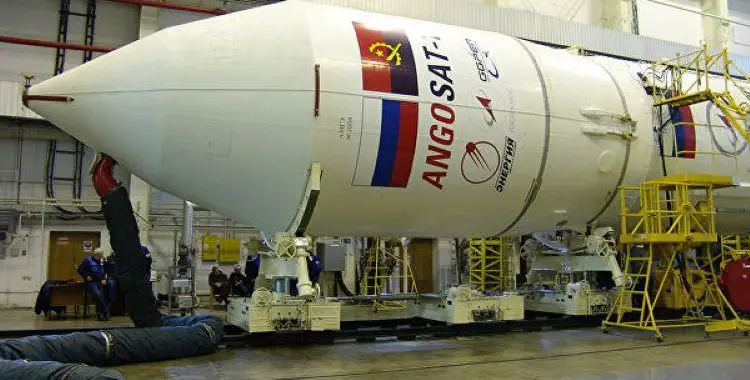The Angolan Management Office of the National Space Program (GGPEN) has started repairs on the ANGOSAT-2 satellite’s control and operating systems. This activity falls under the purview of the ANGOSAT project and the duties of the Russian Party. The maintenance work is being done at Funda’s Satellite Mission and Control Center (MCC).
Also Read: Eni and Sonangol Sign DFI for the Caraculo solar project in Angola
Currently, underway tasks include a visual examination, verification of the functioning state, and observation of the performance characteristics of RF equipment and the full information technology infrastructure placed in the MCC. The continuous maintenance also corresponds with the proposal to complete a pre-assessment of the installed infrastructures’ preparedness for the ANGOSAT-2 launch phase, slated for 2022. The RF system’s current upkeep is also critical. This is due to the infrastructure being in charge of communication between the MCC and the satellite. In the interim between the launch of ANGOSAT-2 and the launch of ANGOSAT-2, the infrastructure has monitored about 96 carriers (communication channels) of satellite capabilities delivered to Angola under the ANGOSAT-1 offsets.
Angosat-2’s Unique features From Angosat-1
The Angosat-2 satellite is around 60% complete, and it incorporates enhancements and changes over the Angosat-1. Angosat-1 satellite had sixteen Band C transponders and six Band KU transponders, therefore this communication is seven times quicker. Angosat-2 will have six Band C transponders and 24 Band KU transponders. In addition, a new relay will be integrated into Band KA by the makers. The Angosat-2 satellite will be a two-ton satellite with a high transmission rate (HTS). Each lighted area will be able to store 13 terabytes of data (satellite signal range zones). The satellite will be built on the Eurostar-3000 platform and have a design life of 15 years.
The Angolan government is not being charged for the building of Angosat-2. This is the case due to the insurance package included in the USD 300 million Angosat-1 deal. Angola successfully launched Angosat-1 into orbit on December 26, 2017. However, as soon as the satellite hit orbit, communication was severely disrupted. The ground station recovered communications, but they were lost forever.
